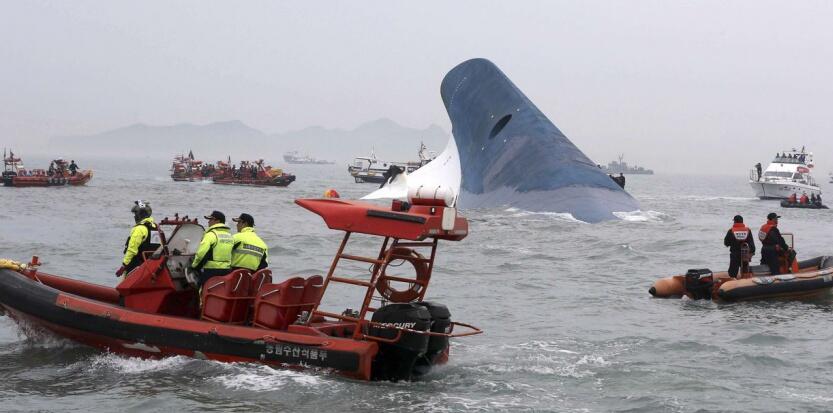The vessel was travelling from Incheon port, in the north-west, to the southern resort island of Jeju.
Most of the people on board were high school students.
As divers searched frigid waters off South Korea in low visibility, hoping to save hundreds of passengers, a dominant theory began to emerge about how the ferry sank.
Area of the sinking on the GeoGarage nautical chart viewer
It most likely struck something in the water, said Peter Boynton, a retired U.S. Coast Guard captain.
"The speed with which this ferry began to list and then roll over on its side suggests significant damage, most likely causing major flooding that would cause a vessel of this size -- almost 500 feet long -- to quickly roll onto its side. That's very likely the result of significant damage," he said.
Some passengers reported hearing a loud bang before the ship began sinking.
That could be from cargo shifting or "some other internal damage," Boynton told CNN's "New Day." "But it does sound, from initial reports, it was more likely that something was struck."
When the ship left Seoul, it traveled through fog, which may have put it off course, said Mary Schiavo, former inspector general for the Department of Transportation.
"So if they hit something, that would have meant they were out of the channel, which is quite easy to do," Schiavo said.
But the South Korean Oceans and Fisheries Ministry said Thursday that the ferry did not deviate significantly from its intended route.
The agency approved the ferry's intended route, and "there was no huge difference between their plan and the actual track chart," spokesman Nam Jae Heon said.
Rescue crews attempt to save passengers from the ferry.
Schiavo said other possibilities include engine failure or an explosion, particularly in the engine room.
"But that probably alone wouldn't account for the sinking this quickly. It probably was something else that happened," she said.
Making matters worse, the ferry carried dozens of vehicles. Once an auto deck is breached, "it's typically open to very significant flooding," Boynton said.
That could explain "why the ferry in just a matter of hours began to roll onto its side so quickly."
Coast guard and navy ships, as well as fishing boats, rushed into the area.
Rescue teams and fishing boats try to rescue passengers on April 16.
For rescue divers, a combination of factors makes saving people especially difficult: very cold waters, strong currents and low visibility, made worse by nightfall.
"The underwater challenges are very, very significant and pose, I would think, tremendous risk for the people who I'm sure are doing their best to help," Boynton said.
For the passengers, the most immediate danger is the cold.
"Pretty much everyone we saw was wearing a life jacket," journalist Andrew Salmon reported on CNN International.
"So the concern is hypothermia. If you're not picked up within two hours, you're in significant danger -- your body core goes cold."
Military and civilian ships and helicopters have been searching for survivors
Some of the rescued passengers report that when the ship began to sink, they were told to jump into the water immediately -- and not to take time to get into life boats.
Sometimes after a breach, as the water begins gushing in, "there's a sucking, there's a motion, that just makes it impossible to fight," Schiavo said.
"So the order to abandon ship might have indicated that. ... It's almost like a suction that occurs when the water starts coming on, and you can't fight it."
But other passengers said they were told to stay on the ship. Sometimes, "conflicting commands" are given, Schiavo said.
"There can be a lot of confusion in an event like this."
Links :
- BBC : South Korea ferry: Hundreds missing as ship sinks



BBC : South Korea Sewol ferry: What we know
ReplyDeleteIHS Maritime : Infographic from AIS data (image)
IHS Maritime : Infographic from AIS data (PDF)